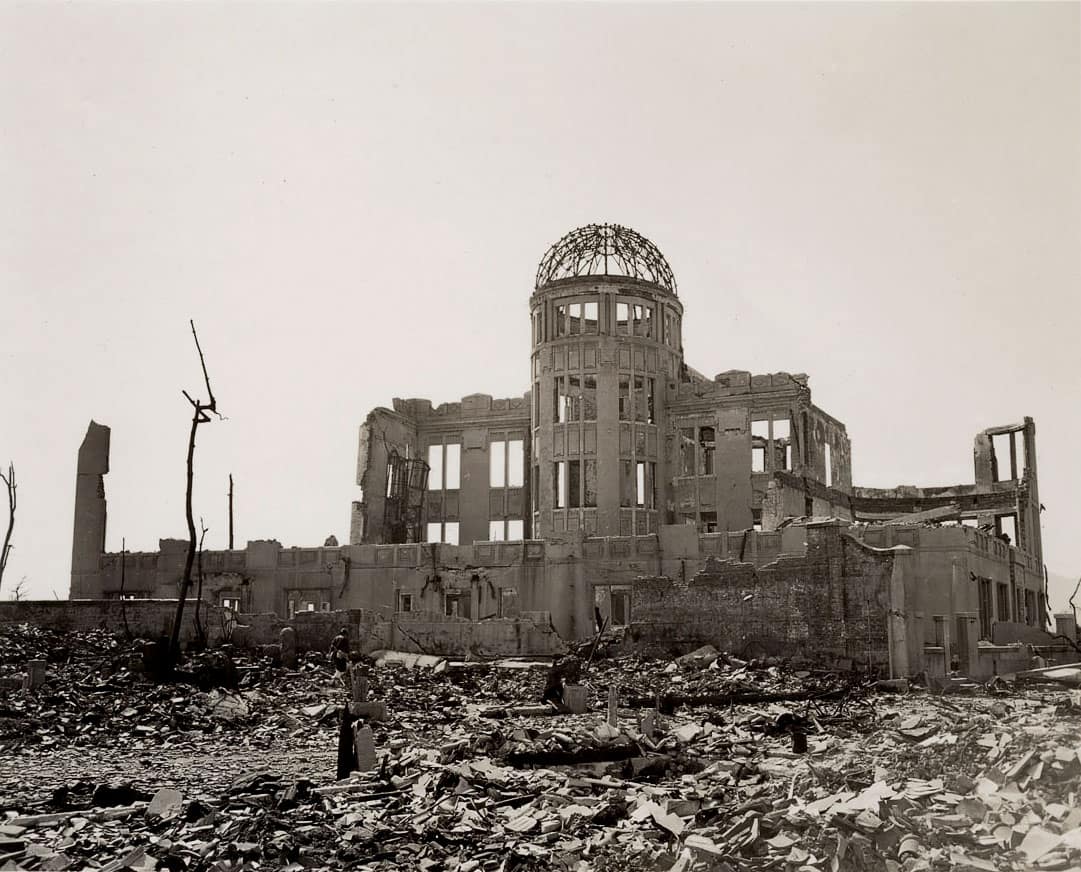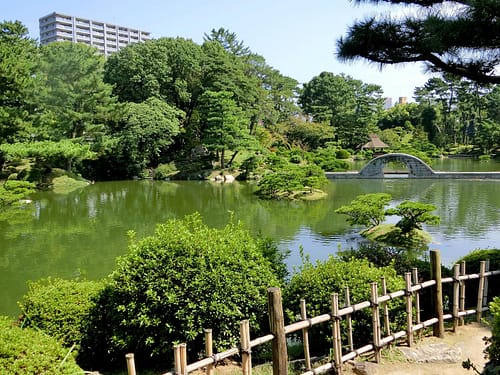On August 6, 1945, at 8:15 am, US forces dropped the atomic bomb on Hiroshima. The first ever used on humankind. This unimaginable atrocity ended many lives in the blink of an eye and plunged hundreds of thousands into unspeakable suffering for the rest of their days. As one survivor put it, “I haven’t been to Hell, so I don’t know what it’s like, but Hell is probably like what we went through.”
The following quote from the Hiroshima Peace Reader, written by the late Yoshiteru Kosakai, director of the Hiroshima City Archives Library, provides a glimpse of Hiroshima and its people immediately after the atomic bomb explosion.
As a brilliant thermal flash covered the city with a tremendous roaring blast, Hiroshima was instantly leveled. A huge pillar of flame shot up into the air, and volumes of smoke curled upward.
The whole city turned into an inferno with dead and wounded lying everywhere. Many parts of the city caught fire, and soon the conflagration had spread over the entire city. In the midst of the flames and the raging whirlwind, crowds of people, either naked or half-naked, with blood all over their bodies, fled from the scene and died. Countless people were burned to death, caught under the collapsed buildings and other debris. People calling for their close relatives and asking for help were heard through the terrible blaze. Almost all died in flames.
Heat rays, blast, and radiation from just one atomic bomb destroyed a whole city and changed the lives of hundreds of thousands forever.
Heat Rays
First the Numbers
The atomic bomb exploded about 600 meters (2,000 ft.) above the ground. First, it emitted a blinding flash. Then a massive fireball expanded to 400 meters (1,300 ft.) in diameter after one second. The fireball’s surface reached 7,700 degrees Celsius (14,000 degrees Fahrenheit).
Ground temperatures at the hypocenter reached between 3,000 and 4,000 degrees Celsius (5,400-7,200 degrees Fahrenheit). Although this burst of heat lasted for only three seconds, it was enough to set huge swaths of the city ablaze.
People directly exposed to the heat rays within 1.2 km (0.75 miles) of the hypocenter sustained severe burns and damage to their internal tissues and organs. Most died immediately or within a few days.
Beyond Statistics
Yoshito Matsushige, a photographer for a local newspaper, witnessed the victims. He saw many mobilized students (children forced to work for the war effort) who had come from their work sites in the city center. They had gathered around a police box at the foot of Miyuki Bridge, 2.2 km (1.37 miles) from the hypocenter, about 40 minutes after the explosion.
An excerpt from his testimony reads:
Having been directly exposed to the heat rays, they were covered with blisters, the size of balls, on their backs, their faces, their shoulders, and their arms. The blisters were starting to burst open, and their skin hung down like rags. Some of the children even had burns on the soles of their feet. They’d lost their shoes and run barefoot through the burning fire.
The intense heat rays ignited a massive fire across Hiroshima. Wooden homes flattened by the blast served as tinder, and the flames spread fast. Kitchen stoves and ruptured gas lines fueled the fires as they spread out of control. Soon, the whole city became a conflagration. Tornadoes of fire swirled across the ruins. Metal and glass melted like lava.
Around 55% of people exposed to direct heat rays 2 km (1.24 miles) from the hypocenter formed keloid scars (thick, raised scar tissue formed on burned skin). The physical and emotional pain from these disfiguring scars left thousands of survivors in agony and depression. Some women took their lives to leave their misery behind. Others endured repeated surgeries in the hope of feeling “normal” again.
Blast
A fraction of a second after the atomic bomb exploded, it generated a tremendous shock wave of compressed air. At the hypocenter, this blast wind reached 440 meters per second — faster than the speed of sound. Even three kilometers from the hypocenter, the blast produced hurricane force winds around 30 meters per second. When the blast finally spent its energy, all that compressed air rushed back toward the center of the explosion. This second phase of the blast also carried tremendous force and magnified the damage.
The blast leveled Hiroshima castle which stood 1 km (0.62 miles) from the hypocenter. Almost all the wooden houses within 2 km (1.24 miles) collapsed. Many victims had no chance to escape as the blast crushed them dead or pinned them under rubble as fires rushed on. At a distance of three kilometers (1.86 miles), doors, windows, and roof tiles blew away. Most ferroconcrete buildings remained standing, but suffered severe damage.
Shards of window glass and other dangerous debris flew through the air at the speed of sound, piercing walls and human bodies alike. In addition, many people died from impact after being thrown through the air by the blast.
Radiation
The powerful radiation released in the first sixty seconds after the explosion is called “Initial Radiation.” Anyone directly exposed to the initial radiation within 1 km (0.62 miles) from the hypocenter became seriously ill. In fact, most of them died within a few days. Radiation penetrates deep into living organisms and can damage the DNA in our cells. After the initial radiation dissipated, residual radiation remained on the ground and in buildings.
Back then, the people of Hiroshima were not aware of this new type of radioactive bomb. Therefore, numerous people entered the city, as early as the next day, to join rescue activities or to search for their family members. Unfortunately, they became victims of the residual radiation as a result.
Thirty minutes after the explosion, sticky black raindrops fell. Each one carried radioactive dust and soot from the mushroom cloud overhead. Soon, the wind stretched the cloud northwest across the city, enlarging the radiation-affected area to include Hiroshima’s northwestern suburbs, 20 km (12 miles) from the hypocenter. The black rain stuck to people like tar. Many victims, desperate for water, opened their mouths to catch the pitch black drops, not knowing the danger they carried.
Even decades after exposure, radiation continues to inflict suffering and death upon innocent victims. The heart-wrenching story of Sadako Sasaki is just one example of the many children affected by radiation in Hiroshima and Nagasaki. Sadako died of leukemia at age twelve, ten years after the bombing, due to radiation exposure on August 6th, 1945. Though she perished, her wish for a peaceful world lives on through the countless paper cranes folded around the world.
Hiroshima City estimated that about 140,000 people died in Hiroshima due to the atomic bomb by the end of 1945 (August 6-December 31).

